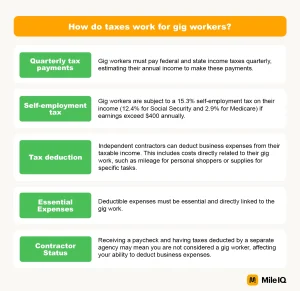Sustainable Investing for Millennials and Gen Z: Your Values, Your Portfolio
5 min readLet’s be honest. For a long time, investing felt like a sterile game. A world of confusing charts, distant corporations, and a single, cold goal: maximum profit, no matter the cost. It didn’t exactly light a fire for generations who came of age during financial crises, climate strikes, and social awakenings.
But here’s the deal: that old narrative is crumbling. A new wave of investing is here, and it’s tailor-made for the millennial and Gen Z mindset. It’s called sustainable investing, and it’s not just a niche trend—it’s a fundamental shift. This is about aligning your money with your morals, without sacrificing performance. Think of it as voting with your dollars, every single day.
Why This Resonates Now: More Than Just Returns
So, why is this approach hitting home right now? Well, it’s a perfect storm of values and visibility. You’ve grown up with a front-row seat to the world’s challenges. You demand transparency from brands and institutions. And frankly, the idea of profiting from companies that harm the planet or exploit people just doesn’t sit right.
You’re not alone. The data, well, it speaks volumes. A 2023 study from Morgan Stanley found that a staggering 99% of millennials are interested in sustainable investing. This isn’t a passing interest; it’s a core financial value. It’s the intersection of personal finance and a deeply held desire for a better, more equitable world.
Decoding the Jargon: ESG, SRI, and Impact—What’s the Diff?
The terminology can feel like alphabet soup at first—ESG, SRI, impact. Let’s break it down into plain English.
ESG Investing: The Lens
ESG stands for Environmental, Social, and Governance. This isn’t about excluding “bad” companies outright. It’s a framework for evaluating them. It’s like a more holistic report card.
- Environmental: How does a company handle climate change, waste, and resource use?
- Social: How does it treat its employees, customers, and the communities it operates in? Think labor practices, data privacy, diversity.
- Governance: How is the company run? Is leadership diverse and transparent? What are its ethics?
Investors using ESG are essentially saying, “Companies that manage these risks well are likely to be better, more stable long-term investments.” It’s a risk-management strategy with a conscience.
SRI: The Filter
Socially Responsible Investing (SRI) is a bit more direct. It uses negative or positive screens to include or exclude companies based on specific ethical guidelines. For example, an SRI fund might automatically filter out all fossil fuel companies, tobacco producers, or weapons manufacturers. It’s a more values-driven, exclusionary approach.
Impact Investing: The Spotlight
This is the most hands-on approach. Impact investing actively seeks out companies, funds, or projects with the explicit goal of generating a measurable, positive social or environmental impact, alongside a financial return. Think renewable energy projects, affordable housing initiatives, or micro-finance loans in developing countries. You’re not just avoiding harm; you’re actively funding solutions.
| Approach | Main Goal | How It Works |
| ESG | Use ESG factors to find stronger, lower-risk companies. | Integration & Analysis |
| SRI | Align investments with personal ethics. | Screening (Exclusion/Inclusion) |
| Impact | Generate specific, positive social/environmental outcomes. | Directing Capital to Solutions |
How to Actually Start Your Sustainable Investing Journey
Okay, you’re sold on the concept. But how do you, you know, do it? The good news is it’s never been easier. You don’t need a fortune to begin.
1. Define Your Own “Why”
First, get clear on what matters most to you. Is it climate change? Racial justice? Gender equality in the workplace? Animal welfare? There’s no right or wrong answer. Your portfolio should be a reflection of your personal convictions. This clarity will be your compass when you start looking at specific funds.
2. Explore the Tools: ETFs and Mutual Funds
For most people, the easiest entry point is through ESG ETFs (Exchange-Traded Funds) and mutual funds. These are baskets of stocks that have already been vetted for sustainability criteria. You buy one share of the fund, and you instantly own a small piece of dozens of companies that meet certain standards.
Platforms like Vanguard, Fidelity, and Charles Schwab, plus newer robo-advisors like Betterment, all offer low-cost ESG options. You can literally start with the price of a single share.
3. Do Your Homework (But Don’t Get Paralyzed)
Look under the hood. Read the fund’s prospectus—it will detail its specific strategy. Is it an ESG fund that just lightly screens, or a strict SRI fund? Be aware of greenwashing, where a company or fund exaggerates its environmental credentials. A little digging goes a long way.
The Performance Question: Can You Do Well by Doing Good?
This is the million-dollar question, right? The old myth was that sustainable investing meant sacrificing returns. The modern reality? Not so much.
Numerous studies now show that ESG strategies have, in many cases, matched or even outperformed their traditional counterparts. Why? Because companies with strong ESG profiles are often better managed, more innovative, and less likely to be hit with massive fines, scandals, or reputational damage. They’re simply better positioned for the long haul. Investing in a company that’s preparing for a low-carbon future is just… smarter.
The Future is Already Here
This movement is more than a financial strategy; it’s a reclamation of power. It’s a way for a generation that often feels shut out of traditional systems to shape the economy directly. Every dollar invested sustainably is a signal sent to the market—a demand for accountability, for innovation, for responsibility.
Your portfolio is no longer just a number on a screen. It’s a statement about the world you want to live in and, crucially, the world you want to build. And that might just be the most valuable return of all.







